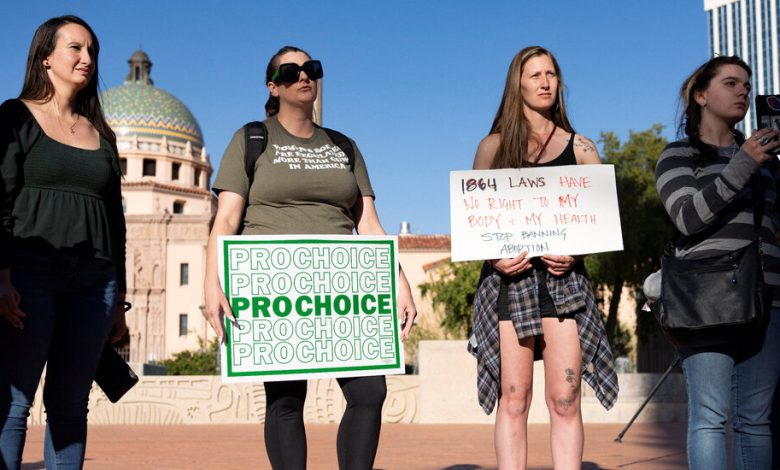The History Behind Arizona’s 160-Year-Old Abortion Ban

The 160-year-old Arizona abortion ban that was upheld on Tuesday by the state’s highest court was among a wave of anti-abortion laws propelled by some historical twists and turns that might seem surprising.
For decades after the United States became a nation, abortion was legal until fetal movement could be felt, usually well into the second trimester. Movement, known as quickening, was the threshold because, in a time before pregnancy tests or ultrasounds, it was the clearest sign that a woman was pregnant.
Before that point, “women could try to obtain an abortion without having to fear that it was illegal,” said Johanna Schoen, a professor of history at Rutgers University. After quickening, abortion providers could be charged with a misdemeanor.
“I don’t think it was particularly stigmatized,” Dr. Schoen said. “I think what was stigmatized was maybe this idea that you were having sex outside of marriage, but of course, married women also ended their pregnancies.”
Women would terminate pregnancies in several different ways, such as ingesting herbs or medicinal potions that were thought to induce a miscarriage, Dr. Schoen said. The herbs commonly used included pennyroyal and tansy. Another method involved inserting an object in the cervix to try to interrupt a pregnancy or terminate it by causing an infection, Dr. Schoen said.
Since tools to determine early pregnancy did not yet exist, many women could honestly say that they were not sure if they were pregnant and were simply taking herbs to restore their menstrual period.





